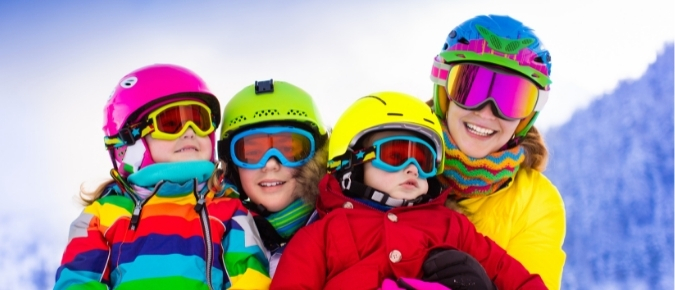
We know that ultra-violet (UV) radiation levels are particularly high during the summer months and highest in the middle of the day. But we can easily forget that UV levels can still be high enough to damage the skin in winter.
Did you know there is up to 30% more UV radiation at Mt Perisher (2,054 metres) and Thredbo (2,037 metres) than at sea level?
Be mindful that UV levels are higher at high altitude, because the air is cleaner and there is less atmosphere to absorb the UV rays. Just to make things worse, snow is also highly reflective! On a sunny day, clean fresh snow can reflect almost 90% of UV radiation.
It means that at the snow the UV is reaching you directly (from the sun) and indirectly (when scattered by the snow) - so you need to protect your skin!
Protecting your skin at the snow
It's cold at the snow, so whilst you will be rugged up to keep yourself warm, remember these tips to protect your skin:
- Take a break indoors in the middle of the day when UV is highest.
- Apply SPF 30 or higher broad-spectrum, water-resistant sunscreen 20 minutes before going outside. Make sure to cover your face, lips, throat, back of the neck, ears, behind your ears, under your chin, beneath your nose, and backs of hands if you are not wearing gloves.
- Carry small tubes of sunscreen and lip balm to reapply every two hours.
- When skiing in spring, you may have more skin exposed as the weather is warmer. Wear tops with long sleeves and a high neck or collar and apply sunscreen to all exposed areas.
- Be a good role model for children and adults around you- actions speak louder than words.
Protecting your eyes at the snow
Snow blindness is sunburn on the surface of the eye. It usually only lasts a few days but can be super painful and contribute to long-term eye damage. To protect your eyes at the snow, wear wrap-around sunglasses or snug-fitting goggles. Check the tag to ensure glasses or goggles meet the Australian Standard AS/NZS 1067.1:2016 (lens category 2 or higher).
If you wear prescription glasses, talk to your optometrist about getting prescription lenses fitted in your sunglasses or goggles.
Remember, sun protection is needed when UV is 3 or above regardless of the temperature (even if it's freezing cold!). When you are at the snow, download the SunSmart App to find daily local UV levels and Slip, Slop, Slap, Seek and Slide!






